Lieuwen, Jan Klaas.
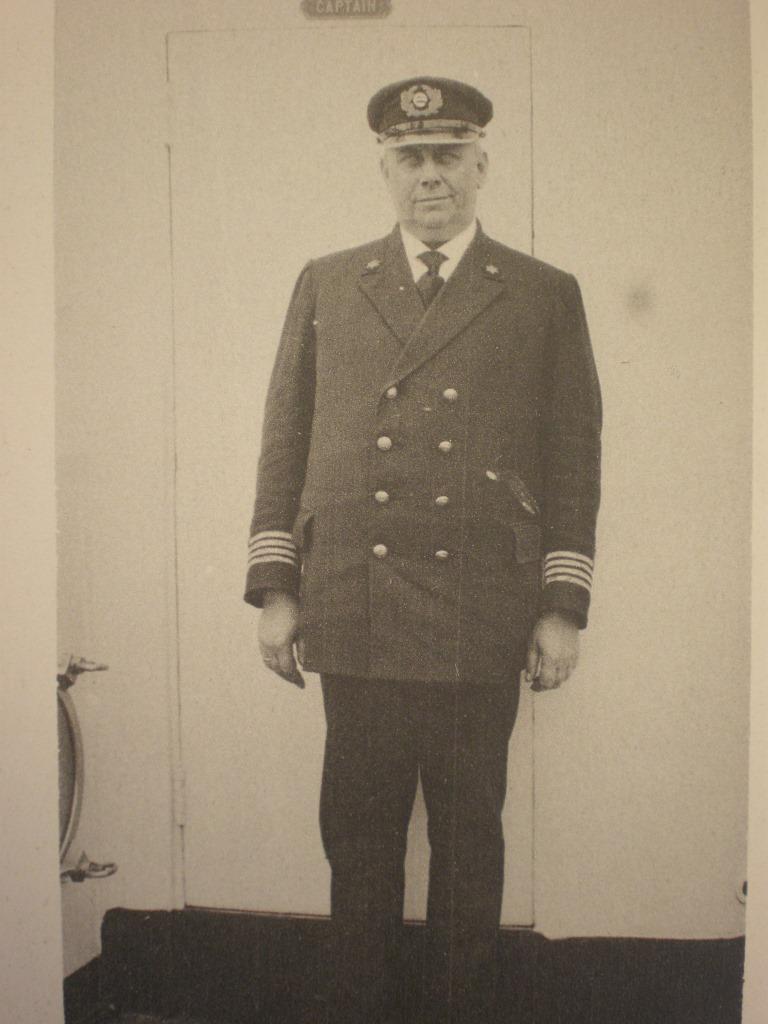
Photo of Captain Lieuwen taken during the 1926 world Cruise
Captain Jan Klaas Lieuwen was born in Amsterdam on 18 May 1876. He was the son of Klaas Jans Lieuwen (Born 23 Aug. 1835 on the island of Terschelling – died 1892) and Anna Cornelia Schol (1839 – 1921) Father Lieuwen was by 1891 a retired Merchant Navy Captain but still working as a boat handler in the port. He had been a sailing ship captain and had settled down in Amsterdam as he mainly sailed for company’s registered in Amsterdam (a). There was an older sister (Jacoba Johanna born 01 May 1871), a younger sister Martha Josephina (born 04 November 1877) and a younger brother Cornelis born 28 Aug. 1879) (See note 2) and then there was a niece in the household called Maria (born on 10 Dec. 1872 on Terschelling)
There were many sailors among the relatives and some also joined Holland America. One was Willem Frans Lieuwen. His father was a nephew of the Captain. This Lieuwen did not stay with the company until he made captain but he was a well known character at the time in the Netherlands. While sailing for the HAL he published poems under the name “Toit Meet” the Pidgeon English name for Third Mate.
Hence it was not that strange that Jan Klaas also decided to go to sea, especially as the family home was only 5 minutes away from the old port of Amsterdam. Living in Amsterdam it made sense to join the local maritime school there. Which had the advantage that it was also the oldest Maritime Academy in the Netherlands and was called the “Kweekschool voor de Zeevaart”. A cadet was known as a “Kwekeling” which meant so much as – being nurtured for-
He was accepted on 03 Aug. 1891 and enrolled in the three year course. During he had very good marks in practical seamanship and Weapons; he did not seem to have been so fond of Gymnastics. On his retirement the captain indicated that he and another pupil were the first to be accepted by the Holland America Line as a sort of guinea pig to see if the “Amsterdam” school lived up to the standards of the company. Obviously it did as since then a large number of pupils joined Holland America and made it to Command. (ED: Including Yours Truly)
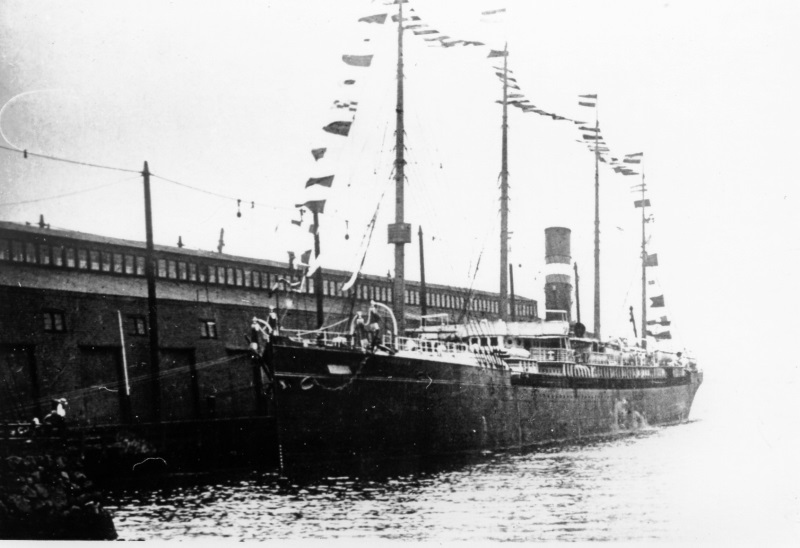
The ss Spaarndam (I). She was the latest in a serie of ships which Holland America Line purchased when there was an upswing in emigrant traffic. She is seen here dressed overall for an unknown occasion in Hoboken, New York.
On 29 September 1894 he is accepted by the Holland America Line and placed as cadet on ss Spaarndam for the service to New York. The Spaarndam (I) was the flagship of the company as she sailed under the command of the company commodore Capt. Bonjer the first captain of the ship. Later on, when captain, Lieuwen himself would be in command of a ss Spaarndam when he brought the 2nd one of that name into service. He would see Captain Bonjer again in 1895 when they both sailed on the new Flagship ss Rotterdam (III)
He returns to school on 18 October 1895 with a very good attest for his sea going year. On 21 November 1895 he passes his exam for 3rd Mate Deep Sea with a note for speaking 3 languages (French, English and German) On 03 December 1895 he is honourably dismissed for the Academy with very good marks for Skills, behaviour and sea going attest. (d)
He returns as 4th. Officer to the company is as is assigned again to the ss Spaarndam. His army records indicate that he was exempt from regular military duty in December 1895 but on 01 Jan. 1896 he is officially appointed as Royal Navy Extraordinary Ensign and to serve in the Reserves for a period of at least six years. (c )
From that moment onwards the regular pattern establishes itself with rotating over the fleet and spells in the Dutch Royal Navy Reserve. When by 1900 the company brings cargo ships into service he is assigned to those upon promotion and then rotates back to the passenger ships when his seniority increases.
On 03 Oct. 1901 he is living in Rotterdam and there he marries Margareta Philippina van Zuuren (Born 15 March 1878 at Antwerp – passed away on 21 march 1965). They stay in Rotterdam until 1925 when they move to the suburb of Overschie. (b)
The Family was blessed with 4 children:
– Anna Maria Philippina – Born. 02. Oct.1903 (Annie)
– Margaretha Jacoba Martha ( nickname Gre) – Born. 09. March.1905 (g)
– Jeanne – Born. 26. June 1908 (passed away young due ti Brain tumor and trauma from Internment in Japanese Concentration camp during WWII)
– Cornelia – Born. 26. Feb.1910 (Cockie)
Eventually he builds a house in Overschie called “Dijk en Dam “ after the name endings of the HAL ships. The actual building was done by his son in law Albert Aalbers who was a very wellknown architect in the Netherlands in the 1930’s. (g)
On 23 August 1902 while serving as 2nd Officer on the ss Rotterdam (III) he jumps overboard to save the life of a lady who during departure from New York had fallen overboard. He was given the golden medal of the Life Saving Benevolent Association of New York. Handed to him during the next call to New York of the ship.
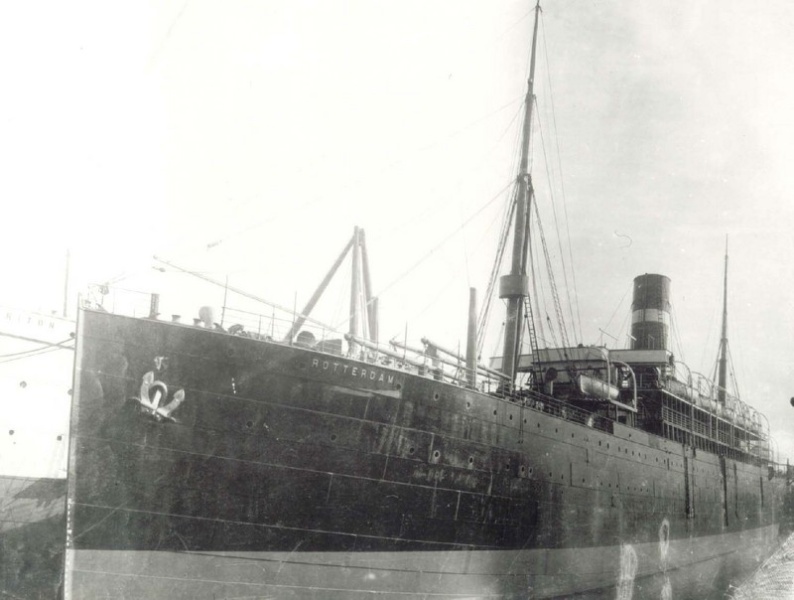
The ss Rotterdam (III) had joined the company in 1897. she is one of the lesser known Rotterdam,s as she only sailed for a short period for the company and was overshadowed by her successor of 1908.
He is promoted to Captain in 1909, when the company takes over the ships of the “Burg line”. This was a branch service of the Furness and Withy Company which sailed to the Chesapeake Bay area. So they were in competition with Holland America and a deal was made, whereby HAL took over all the ships on this service while Furness remained the agents for the company. The ship was taken over on April 22nd, and commenced her first HAL voyage on 3 July sailing from Rotterdam to Baltimore and back. This was the ss Zijldijk and he mainly sails on this ship until in 1913 he is send to Hartlepool in the United Kingdom to collect the ss Noorderdijk (I) she had been ordered by a British company but Holland America took over the contact while the hull was being constructed. The Noorderdijk did not stay with the company very long as in February 1917 she was torpedoed. Captain Lieuwen had in 1914 transferred to the ss Veendijk so he was not on board.
That did not mean that he did not have his share of adventures during the war. Although the Netherlands was officially neutral it did not mean that it was not affected by the war. The Dutch ships still sailed and some ran onto mines or where torpedoed. He also had some adventures.
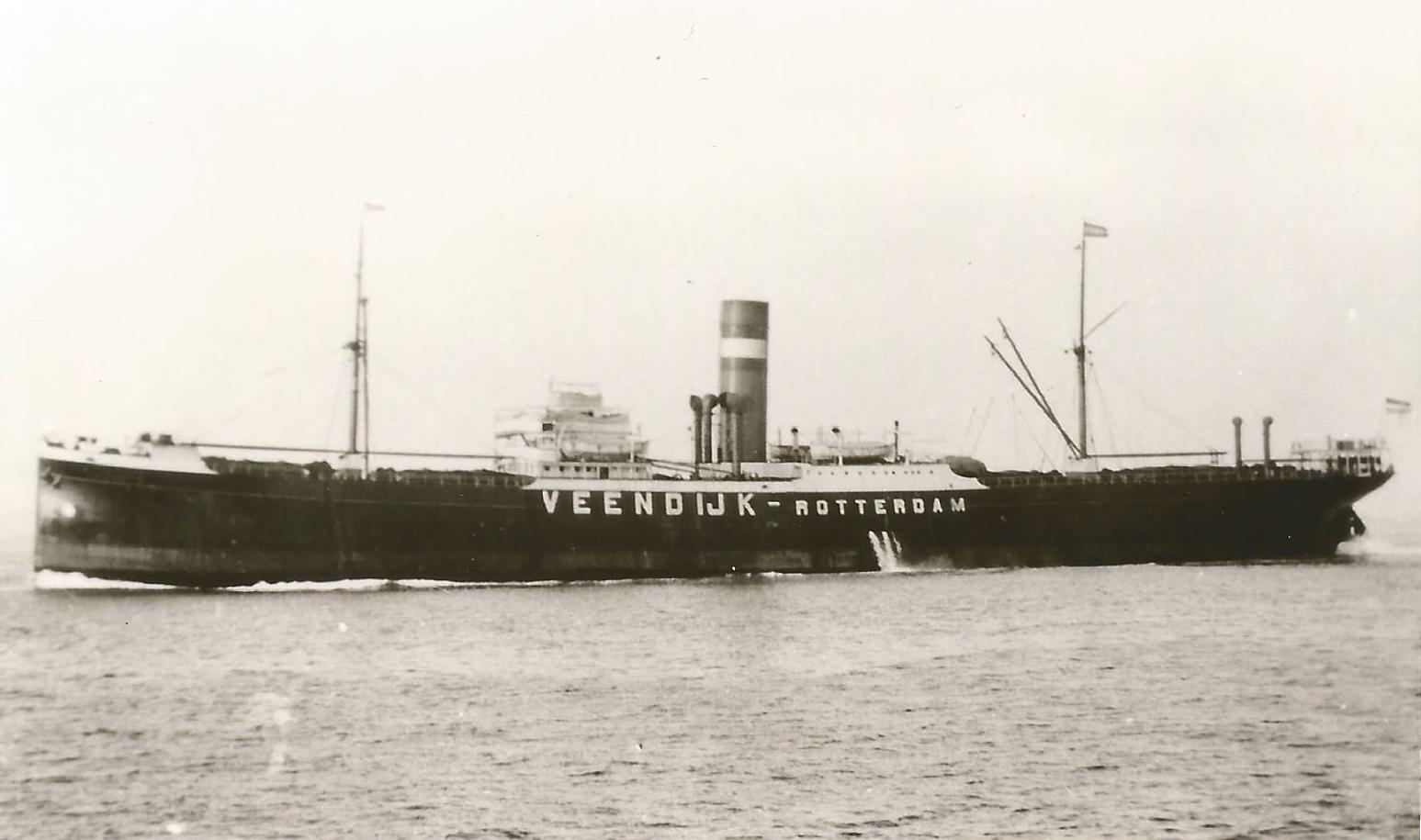
The ss Veendijk came to Holland America in 1913. She is seen here with the neutrality lettering on the side indicating that this picture was taken during world war I
While on the ss Veendijk he left New York one voyage with a cargo of grain and 150 tons of TNT. While outbound the grain ignited in the centre holds and the ship’s crew was not able to extinguish the fire. Hence he turned around and sailed with smoke and flames coming out of the hatches back into port, while the flames crept closer and closer to the Hatch were the explosives had been loaded. He made it just in time for the Harbour fire brigade to flood the cargo hold and prevent worse. The dangerous cargo was discharged and the ship sailed again for Europe. Holland was desperately waiting for the grain as due to the war the supplies from Germany had stopped. Next came an 8 month voyage when the ship sailed from Rotterdam via the Panama Canal to the Dutch East Indies and from there via Cape Town back to New York. There he was relieved while the ship made a second similar voyage. When she then returned to the USA she was seized by the Us Government, together with all neutral ships lying in the ports for use of the US war effort.
Captain Lieuwen was in command of the ss Andijk (I) at that time, and loading cargo and his chief engineer managed to get out of port before When shortly after the American seized all the neutral ships in port, he managed to get out with the ss Schiedijk, just before the midnight hour of 20 March 1918 when the law came into being. In general he had a lucky war as he never saw a U boat while crossing the north Atlantic on a regular basis.
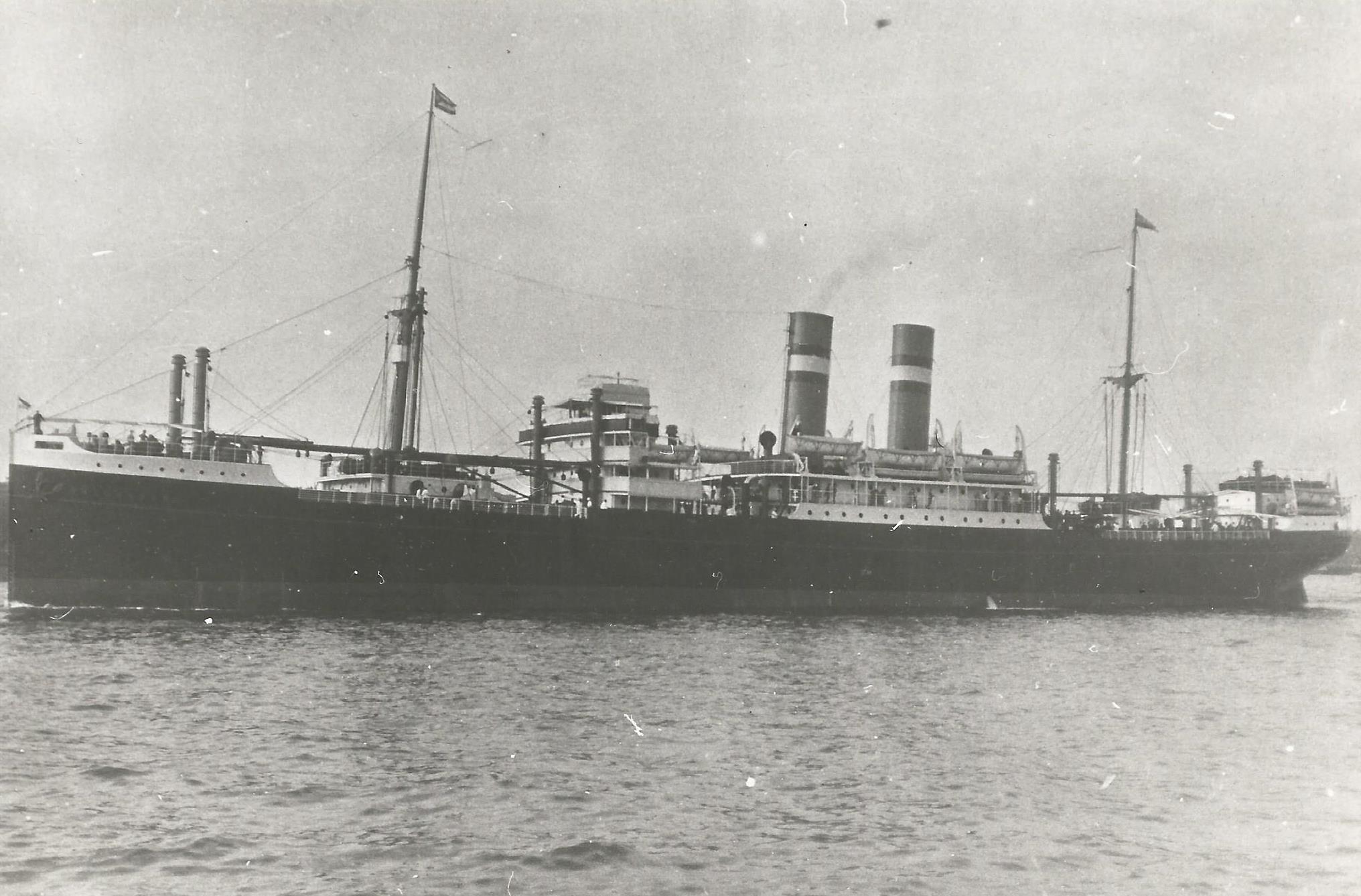
The ss Spaarndam (II) in her original layout she could carry 14 in First Class, 174 in Second class and 802 in Third Class. In 1934 she had a refit whereby the 2nd (dummy) funnel was removed and the passenger accommodation reduced to 30 cabin and 60 third class, In November 1939 she hits a mine, which causes a fire and the ship sinks in shallow water. The burnt out hulk is scrapped on the spot.
With seniority came the transfer to the passenger’s ships. First the passenger-cargo ships and as such he was assigned to the new Spaarndam (II) when it came into service on 30 Jun3 1922. The ship was one of the four Edam class ships especially designed for the cargo ships via the Iberian Peninsula to Cuba and the Gulf of Mexico. The passenger accommodation was mainly mean to carry labourers for the yearly sugar cane season. Later on when there was less work to do here, the Edam class also sailed on the North Atlantic route.
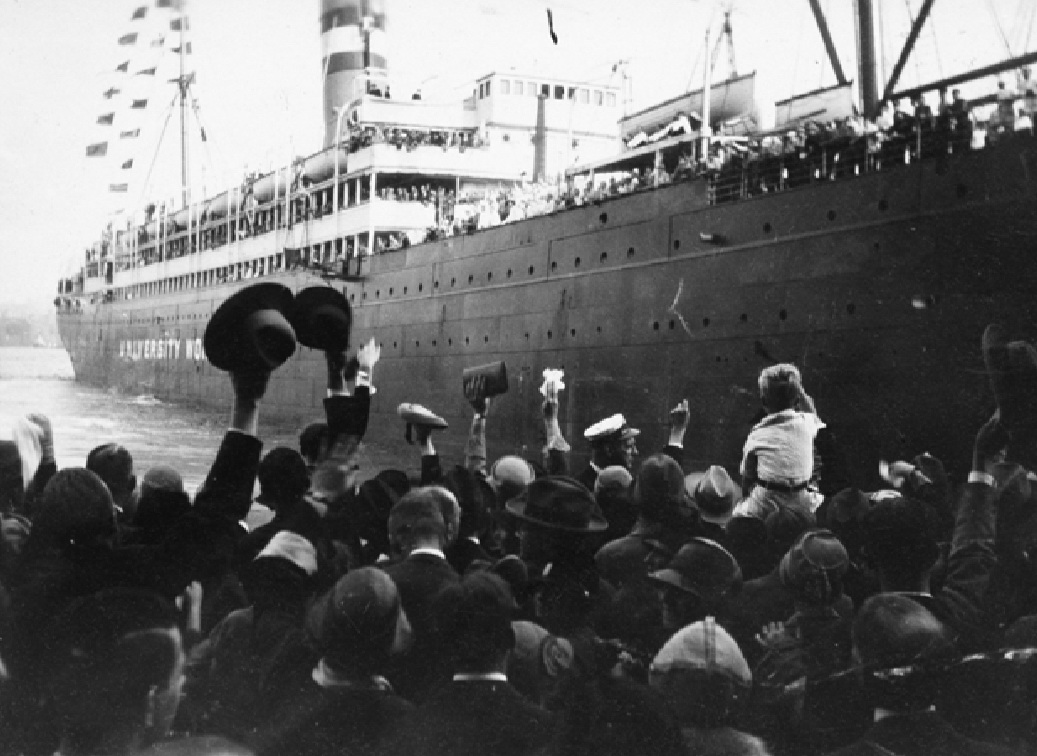
The ss Rijndam (I) see here departing from New York on her world cruise. Note the letters on the side of the hull denoting University at Sea.
Then in 1926 came the captains biggest adventure by embarking on the First real cruise of Holland America and one that became at the same time the longest in our company history; a record that still stands. A 7.5 month long around the world voyage as a floating university. In the USA there had been a movement for a long time to offer education to students by visiting the areas that were part of their studies. This culminated in a “University at Sea” and Holland America offered the old ss Rijndam (I) for this purpose. The cruise started on 18 September 1926 from New York and returned again on 1May. The following ports were visited:
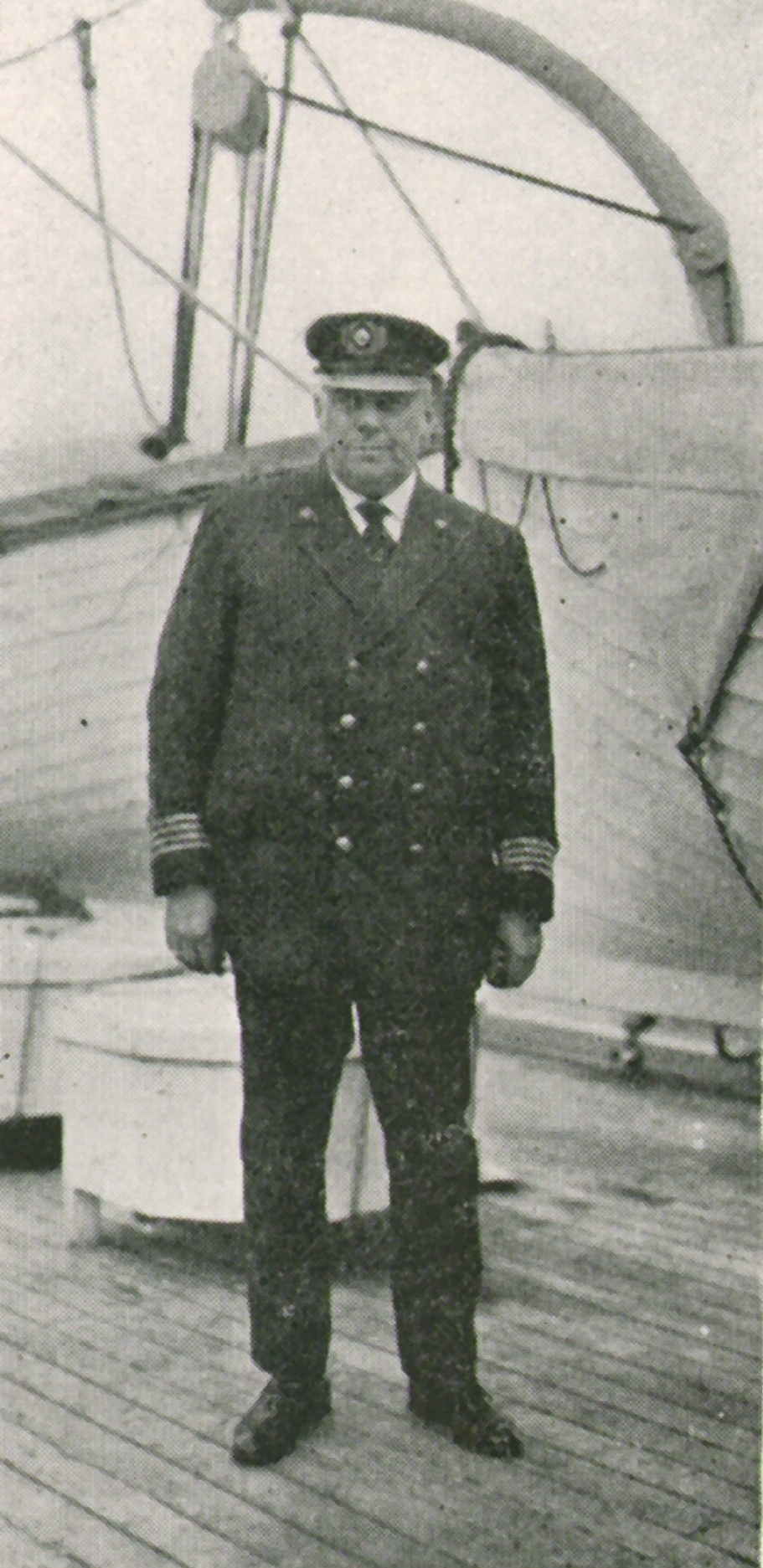
Capt. Lieuwen on board the ss Ryndam during the students world cruise.
New York – Havana – Panama Canal – Los Angeles – Hilo – Honolulu – Yokohama – Kobe – Mojo – Shanghai – Hong Kong – Manila – Bangkok – Singapore – Batavia – Colombo – Bombay – Aden – Suez – Haifa – Constantia – Piraeus – Ragusa – Venice – Trieste – Valetta – Naples – Civitavecchia (for Rome) – Naples – Villefranche – Algiers – Malaga – Gibraltar – Lisbon – Le Havre – Rotterdam – Hamburg – Copenhagen – Gothenburg – Oslo – Leith – Tilbury (for London) – New York.
While making the cruise the students visited various places of interest and studied while on the ship. They even met the King of Siam and Mussolini. The cruise was a big success and after the war, Holland America again participated with the next Ryndam (II) in similar programs.
For more information see the subdirectory in my website of days gone by. where there is article called Around the World at Seventeen.
This tells the story of one of the students Charles Ladd, who wrote a book about his experiences.
Barely home he receives on 01 July 1927 the Gold medal of the Dutch Royal Meteorological Society for the keeping and submitting of Meteorological journals.
By now he is assigned to the two largest ships of the company, first the ss Nieuw Amsterdam and the ss Rotterdam (IV). The latter had been the Flagship of the company until the arrival in 1929 of the Statendam (III). With the Rotterdam he makes 19 voyages and then retirement calls. Before the starts his 2nd voyage with this ship, voyage 151, he receives on 16 April 1930 Captain Lieuwen the gold medal of the Company for having completed 100 North Atlantic voyages.
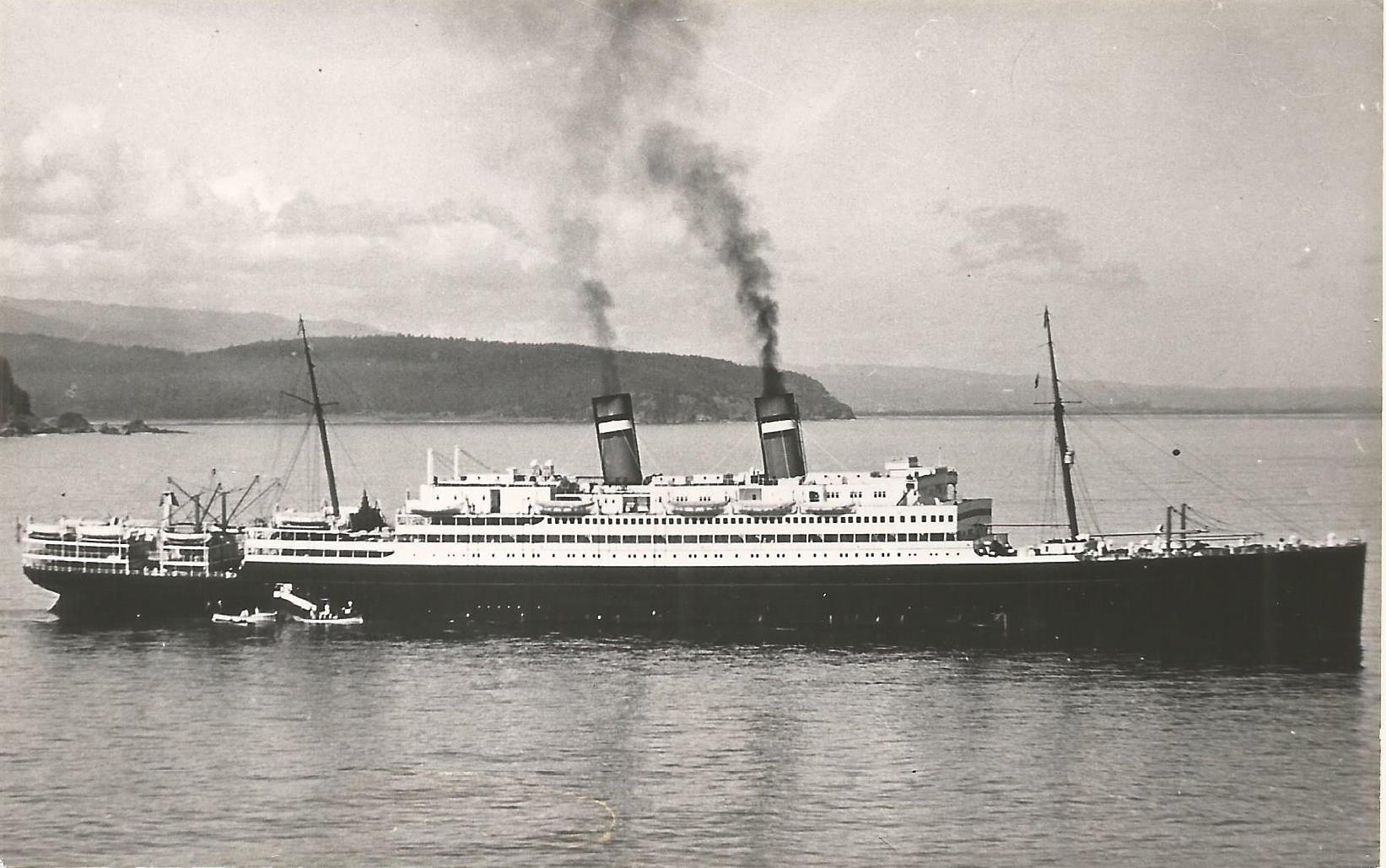
The ss Rotterdam (IV) during one of her cruises at an unknown location.
His final voyage was the January cruise from New York to the Mediterranean and the Holy Land which had become a tradition for the ship to make each spring, during the off season of the Atlantic. The ship arrives on 05 April 1932 in Rotterdam and he steps ashore for the final time. He was made a Knight in the Order of the Orange Nassau, most likely upon his retirement. Captain Lieuwen was never promoted to Commodore as he was 3 years older than Captain van den Heuvel, the commodore at that time, and had joined the company 6 years later. And with Holland America these things went by strict seniority in those days.
He retired officially on 01 May 1932 from the company as he was reaching the mandatory retirement age of 55 years. Having sailed for the company for 37 years. He joined at the right time when the company was expanding and made captain in 1903. In his farewell interview he indicated that he would have stayed on a bit longer as he still felt very good but rules are rules. On the other hand he was looking forward to spend more time with his 4 daughters and grandchild as he had calculated that in the last 30 years he had not been at home more than 5 years. Including the North Atlantic crossings, he made more than 200 voyages for the company. One of his first plans was to take his wife to New York so he could meet all his friends there, she had always heard about but could never meet.
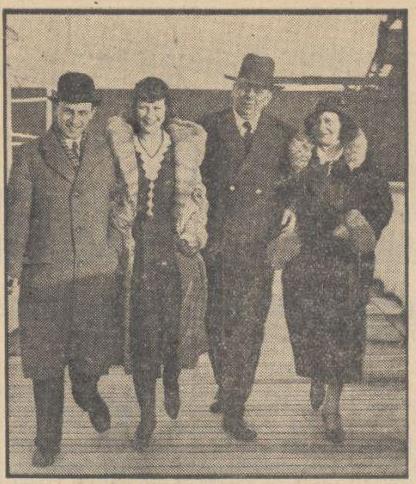
Upon his final arrival in Rotterdam his wife and one of his daughters came to collect him,
In January 1934 the family moves to Nice in France and returns to Holland in December 1945 and settles then down in Bilthoven in the center of the Netherlands.
Here he passes way on 16 Sep. 1967 at the ripe age of 91. His wife had passed away before him. One daughter lived in Rotterdam, one in New York and one in Bilthoven. The announcement in the newspaper lists that he was a great grandfather.
Note1: The younger brother, Cornelis also went to sea via the same Academy and was an outstanding pupil who won prizes for writing the best end of year thesis, year after year. He also received the recognition of “outstanding pupil” in 1895. He did not join Holland America Line but went to the “Netherland Line” of Amsterdam. (d)
To avoid confusion there was another younger brother called Jan Cornelis also joined Holland America but later went shoreside to become a lecturer at various Nautical Schools and ended his career as Vice Principal at the Maritime College in Amsterdam. (g)
Note 2: there was also a Willem Frans Lieuwen (Born Amsterdam 29 November 1896) who sailed for the Holland America Line between 1917 and 1935. His father was Jan Lieuwen captain of the ss Zeta. Although his father, Jan Lieuwen also came from the island of Terschelling, it does not look like it they were closely related at least not at the level that the fathers might have been brothers. (b,d,f)
- (a) www. scheepsindex.nl
- (b) Family information by Mr. E.A Kruidhof.
- (c) Militia Records City of Amsterdam
- (d) Comportementen boeken Kweekschool voor de zeevaart, Amsterdam
- (e) Captain Albert Archives which includes all photos
- (f) Stamboeken en movement boeken of the Holland America Line Archives as held by the Municiple Archives of the City of Rotterdam.
- (g) Mr. J.P Lieuwen.
Last updated: 18 March 2021
Ships Listing: (f)
Date: Function: Ship: Wages and/or remarks.
29 Sep. 1894 Cadet Spaarndam 10,–
20 Feb. 1895 Cadet Veendam 10,–
21 Mar. 1895 Cadet Spaarndam 10,–
18 Oct. 1895 temporary dismissed to go to school for examination. Passed on 20 nov. 1895
08 Jan. 1896 4th. Officer Spaarndam 30,–
24 Mar.1896 Temporary dismissed to join the Royal Dutch Navy Reserve.
20 Jul. 1896 4th. Officer Edam 30,–
20 Oct. 1897 3rd. Officer Rotterdam 50,–
24 Jan. 1898 3rd. Officer Amsterdam 50,– transferred in New York.
06 Feb.1899 Temporary dismissed to go to school for 2nd mate ticket. Passed 16 march 1899
05 Apr. 1899 Appointed in the Royal Navy Reserve for a six month training period
10 Oct. 1899 3rd officer Spaarndam 50,–
18 Nov. 1900 3rd officer Potsdam 50,–
27 jun. 1901 Act 2nd officer Potsdam 60,–
16 Oct. 1901 Act 2nd officer Sr. Potsdam 70,–
03 Jan. 1902 Act. 2nd officer Sr. Rotterdam 70,–
30 Jan. 1903 Temporary dismissed to go to school for first mates ticket. Passed 3 sept19 03
26 Sep. 1903 For 3 months to the Royal Navy placed on board HMS Evertsen at Willemsoord.
31 Dec. 1903 2nd Officer Amsteldijk 70,–
07 Apr. 1904 2nd Officer Sr. Noordam 70,–
26 Jul. 1904 Promoted to lieutenant 2nd class Royal Navy Reserve.
11 Nov. 1904 Temporary dismissed to join the Royal Navy Reserve
19 Nov. 1904 Placed for 6 months on board HMP de Ruyter at Nieuwediep.
02 Jun, 1905 2nd officer Sr. Rotterdam 70,–
13 Jul. 1905 Act. Chief Officer Rotterdam 90,–
16 Aug. 1905 2nd Officer Sr. Rotterdam 70,–
21 Sep.1905 Act. Chief Officer Soesterdijk 90,–
11 Apr. 1906 2nd Officer Sr. Statendam 70,–
13 May. 1906 Act. Chief Officer Statendam 90,-
01 Aug. 1906 Act. Chief Officer Soestdijk 90,–
09 Aug. 1907 Chief Officer Soestdijk 100,–
21 Mar. 1908 Chief Officer Potsdam 100,–
09 Jul. 1908 Chief Officer Noordam 100,–
08 Aug. 1908 Chief Officer Statendam 100,–
25 Nov. 1908 Temporary dismissed for the Royal Navy.
05 Mar. 1909 Chief Officer Soestdijk 100,–
22 Apr. 1909 Captain Zijldijk 200,–
26 May 1910 Captain Soestdijk 200,–
10 Jul. 1910 Captain Zijldijk 200,–
14 Aug. 1910 Stayed behind in Baltimore hospital due to broken ankle, later it was a broken leg.
04 Oct. 1910 Captain Zijldijk 200,–
01 Jan. 1911 Due to wage review 250,–
16 Apr. 1913 On standby
28 Apr. 1913 Departed for West-Hartlepool for the ss Noorderdijk.
28 Apr. 1913 Captain Noorderdijk 250,–
30 Jun. 1914 Temporary ashore due to illness.
16 Jul. 1914 Captain Veendijk 250,–
01 Jan. 1916 Wages increased 300,–
08 Nov. 1916 Captain Sommelsdijk 300,– transferred in New York.
22 Dec. 1916 temporary ashore
31 Jan. 1917 Captain Schiedijk 300,–
17 Sep. 1917 Temporary ashore
28 Dec. 1917 Captain Andijk 300,–
30 Jul. 1918 Captain Sommelsdijk 300,– with the Nieuw A’dam to N.Y.
01 Aug. 1918 Wages increased 350,–
01 Jul. 1919 Wages increased 700,–
13 Aug. 1919 temporary ashore returned per ss Rotterdam
24 Sep. 1919 Captain Zuiderdijk 700,–
01 Jan. 1920 Wages increased 725.—
15 Oct. 1920 Wages increased 750,–
10 May.1921 Captain Ijseldijk 750,–
12 Sep. 1921 Captain Westerdijk 750,–
16 Oct. 1921 Wages decreased to 685,–
31 Mar. 1922 Wages decreased to 660,–
13 Jun. 1922 Temporary ashore
26 Jun. 1922 Captain Spaarndam 660,–
28 Aug. 1923 Temporary ashore
03 Nov. 1923 Captain Leerdam 660,–
10 May.1926 Captain Rijndam 660,–
10 May.1926 Wages increased to 685,–
01 Apr. 1927 Wages increased to 705,–
28 Nov. 1928 Captain Ashore 705,–
06 Dec. 1928 Captain Nieuw Amsterdam 705,–
01 Jan. 1929 Wages increased 725,–
13 Dec. 1929 Captain Rotterdam 725,–
01 Jan. 1930 Wages increased 745,–
30 Nov. 1930 wages decreased 596,–
10 Apr. 1932 Temporary ashore 596,–
01 May. 1932 Dismissed and put on standby wages.

March 14, 2021 at 9:40 pm
Very much enjoyed learning more about my great-grandfather. I have lived in the US since 1984. Cockie Lieuwen was my grandmother. I own a copy of the book about the journey of the students at sea. It is falling apart, but as I am a bookbinder, i will restore it. I will print off this biography and keep it with the book. Thank you for this article.